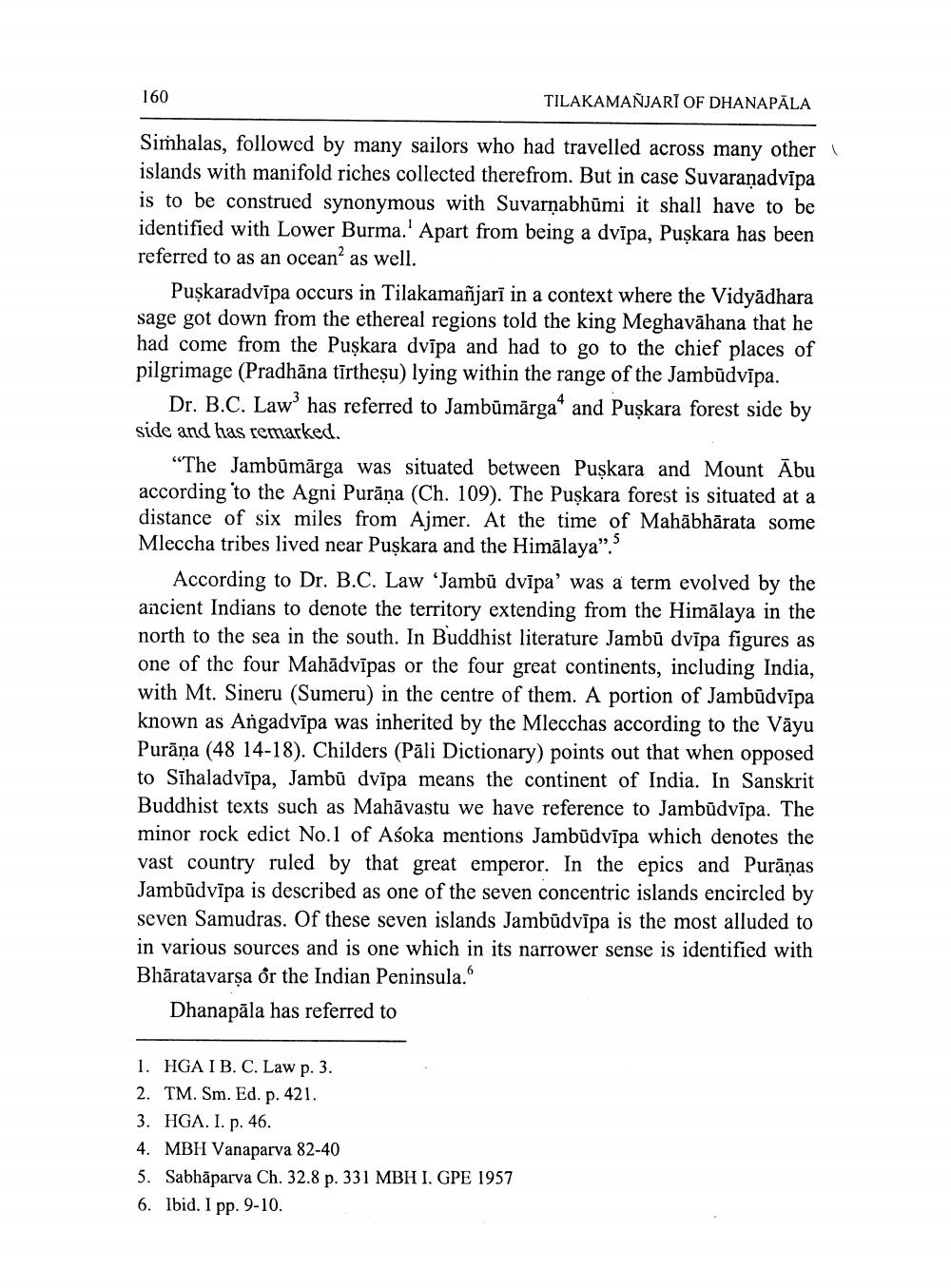________________
TILAKAMANJARI OF DHANAPALA
Simhalas, followed by many sailors who had travelled across many other islands with manifold riches collected therefrom. But in case Suvaraṇadvīpa is to be construed synonymous with Suvarnabhumi it shall have to be identified with Lower Burma.' Apart from being a dvipa, Puskara has been referred to as an ocean2 as well.
160
Puşkaradvipa occurs in Tilakamañjarī in a context where the Vidyadhara sage got down from the ethereal regions told the king Meghavahana that he had come from the Puşkara dvipa and had to go to the chief places of pilgrimage (Pradhana tirtheșu) lying within the range of the Jambudvipa.
Dr. B.C. Law3 has referred to Jambûmärga" and Puşkara forest side by side and has remarked.
"The Jambümärga was situated between Puskara and Mount Abu according to the Agni Purana (Ch. 109). The Puskara forest is situated at a distance of six miles from Ajmer. At the time of Mahābhārata some Mleccha tribes lived near Puskara and the Himalaya".
According to Dr. B.C. Law 'Jambu dvipa' was a term evolved by the ancient Indians to denote the territory extending from the Himalaya in the north to the sea in the south. In Buddhist literature Jambů dvipa figures as one of the four Mahādvīpas or the four great continents, including India, with Mt. Sineru (Sumeru) in the centre of them. A portion of Jambudvipa known as Angadvipa was inherited by the Mlecchas according to the Vayu Purana (48 14-18). Childers (Pali Dictionary) points out that when opposed to Sihaladvipa, Jambū dvipa means the continent of India. In Sanskrit Buddhist texts such as Mahāvastu we have reference to Jambudvipa. The minor rock edict No.1 of Aśoka mentions Jambudvipa which denotes the vast country ruled by that great emperor. In the epics and Purānas Jambudvipa is described as one of the seven concentric islands encircled by seven Samudras. Of these seven islands Jambudvipa is the most alluded to in various sources and is one which in its narrower sense is identified with Bharatavarṣa or the Indian Peninsula."
Dhanapala has referred to
1. HGA I B. C. Law p. 3.
2. TM. Sm. Ed. p. 421.
3. HGA. I. p. 46.
4. MBH Vanaparva 82-40
5. Sabhāparva Ch. 32.8 p. 331 MBH I. GPE 1957
6. Ibid. I pp. 9-10.




